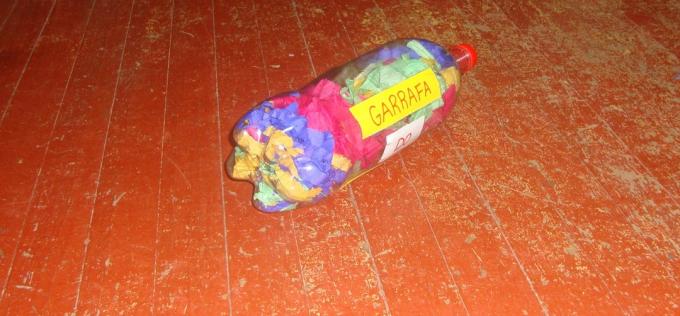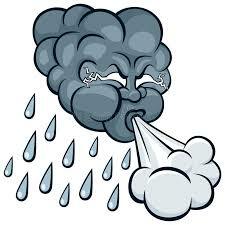
In this post we selected tips and suggestions for games and back-to-school dynamics for the first day of school.
In order not to make the first few weeks of classes a taboo, it is important to think about the process of welcoming and adapting children, which the vast majority feel shy and embarrassed with everything around them (new school, new classroom, new classmates and teachers). With that, a question always arises,“What to do on the first day of school?”.
Don't worry, you're not the only one with this question, after all, college gives us knowledge but not practice. And it was just thinking about this that we selected these tips for Back to School Dynamics, check out:
Index
First of all, I would like to indicate two more posts that complement this one, with several other suggestions for games and dynamics:
And also some classroom decor suggestions:
Another really cool alternative to the back-to-school dynamics are the Memories:

Required Material:
Cardboard hearts cut in two so that one of them fits into the other.
Development:
Each heart can only fit into a single half. Distribute the already divided hearts at random. Inform that when they hear music, they will walk around the room in search of their partner.
When everyone finds their peers, the educator will stop the music and guide the participants to talk. (eg introduce yourselves, tell us something about yourself, what you like to do, how your vacation went, etc.)

Material: An empty bottle (could be soda). The group should sit in a circle. The educator places the bottle lying on the floor in the center of the room and makes it spin quickly, when it stops it will be pointing the neck at someone. The educator will say a word of welcome, encouragement or praise to that person. The person indicated by the bottle will then have the task of turning it and talking to whoever it points to and so on.
If your class is from 1st to 5th grade, divide students into groups.
This is a good time to integrate newcomers. Leave them with the veterans, who must behave as true guides and hosts. On each sheet of paper, describe a location in the school, put the texts in a box and organize a lottery. Each group takes a paper and tries to guess which location is described. Then challenge the groups to find the chosen locations. Arriving at the destination, the students draw the environment in as much detail as possible, write down the names of the employees who work there and their function. Back in class, the groups exchange observations and records and exhibit their productions. Then ask them to produce a map of the school (with your help, of course) on a sheet of cardboard. At each specific location on the map, drawings are fixed. Encourage groups, in the following days, to visit the facilities that have not yet been covered. In classes from 6th to 9th grade, kids can
photographing these places and conducting longer interviews with employees. In this case, you don't need to make the map and can ask for detailed texts about the various “sights” of the school
Perfect dynamic to be used in classes, where you are the newcomer and the students already know each other. It serves, in addition to breaking the initial ice of the first day of class, to show that we don't always know the people around us.
Objectives: Release personal inhibitions contracted; remove the block from people who feel immobilized, unable to move or do what they would like to do.
Dynamic with the objective of getting to know the members of a group and promoting mutual knowledge.
Material: Large room, students sitting in a circle.
Procedures:
The educator should start the game saying his name and a quality that has the initial letter of his name. You must explain to the students that this game has a secret that they must discover. Not all qualities will be accepted and they will have to pay attention to find the reason and get their presentation right. Afterwards, each student will say their own name adding a quality. E.g.: My name is Ricardo and I am laughing. The quality should start with the same initial as the person's name, as people introduce themselves and speak the quality and this does not match the initial of the name, the educator and the other students who already know the "secret" will say that "no é”; The “secret” will only be revealed at the end.
What is your favorite chocolate is a dynamic for starting classes that goes well in all situations and audiences. It is a test, like those in a magazine for teenagers, where ten chocolates are listed and the student has to choose one. Each chocolate has a description that involves issues such as preferences and personality. Usually students love it (incredibly it works) and laugh a lot at the surprising revelations about themselves and their classmates.
Objective: Favor the spirit of cooperation.
Material: Large room, masking tape, students standing.
Procedures: Using masking tape, mark on the floor two close parallel strips representing an “abyss”; place all students on the same side of the “abyss”; explain that they must go through it in a different way, not being able to repeat what has already been done; in the end, there will be few left to cross the “abyss” and will find that there is no other way to do it, since all the ways have already been shown; to stimulate, from there, the help of the group in the sense of giving suggestions to those who have not yet crossed it, promoting an experience of encouragement and cooperation; when everyone has crossed over, ask them to sit down to reflect on the dynamics.
Reflection: What is the feeling of those who stayed for the end? And what did you feel when your colleagues started to help you on the crossing? How did you feel helping your colleagues? Promote other reflections.

Objective: Helping people to memorize each other's names, uninhibiting, facilitating identification between similar people.
For how many people: About 20 people. If it is a larger group, it is necessary to increase the number of questions proposed.
Material needed: A sheet with the questionnaire and a pencil or pen for each.
Description for dynamics: The coordinator explains to the participants that now begins a moment when everyone will have a great chance to get to know each other. From the list of descriptions, each should find a person who fits each item and ask them to sign the name in the box.
1- Someone with the same eye color as yours: ____________________________
2- Someone who lives in a house without smokers________________________________
3- Someone who has already lived in another city______________________________
4- Someone whose first name has more than six letters________________________
5- Someone who wears glasses________________________________________________
6- Someone who has a shirt the same color as yours___________________
7- Someone who likes avocado green ______________________________________
8- Someone who is the same age as you________________________________
9- Someone wearing blue socks_______________________________________
10- Someone who has a pet (Which one?)________________________.
Note: The number of questions can be increased or reformulated, depending on the type or size of the group.
(relaxation/welcome to a new theme)

Objective: Promote the relaxation of students in the group/assimilation or discussion about a content/survey of prior knowledge on a certain subject. Material: Large room with enough chairs for each student. Procedures: Ask all students to be seated in a circle (no empty chairs should be left); explain the game: “Let's take a trip…we're going to the high seas; there occur big and waves; I am the captain of this ship and I am watching. Every time there's a big wave on the right side of the ship I'll let you know and you should jump into the chair on the right; when there's a wave on the left side, you'll jump into the chair on the left and when there's a storm signal and I yell “STORM!” all of you will have to switch places; at that moment the teacher removes a chair and thus there will be a standing student who will be on the lookout for the ship's next voyage, to finally look for a place to sit.
Number of participants:up to 40 participants
Duration:45 minutes
Goals:
General:Favor group presentation
Specific:From a verbal stimulus, promote the relaxation of the group members and their consequent presentation.
Material: blow balls (colored); colored cards; marker pencils and craft paper.
Goals: Excellent moment for group integration, reunion process, celebration.
Material: One balloon for each person and tape.
a) Throw the balloons upwards, not letting them fall, ONLY using your head.
b) Exchange balloons with other people, as many as possible.
a) Throw the balloons upwards, not letting them fall, using ONE hand.
b) Exchange balloons with other people, as many as possible.
4. At the end, make a moment of “celebration”, popping all the balloons at the same time.
Subscribe to our email list and receive interesting information and updates in your email inbox
Thanks for signing up.


